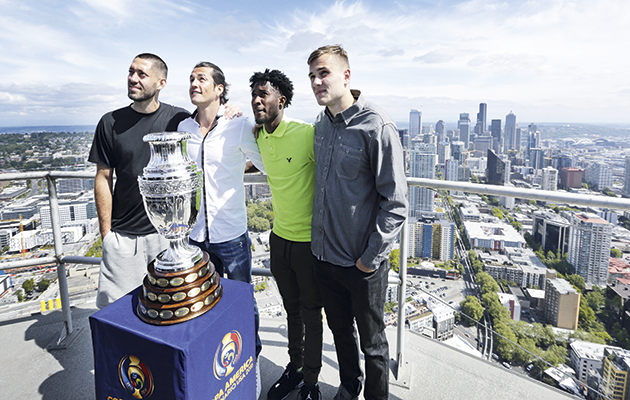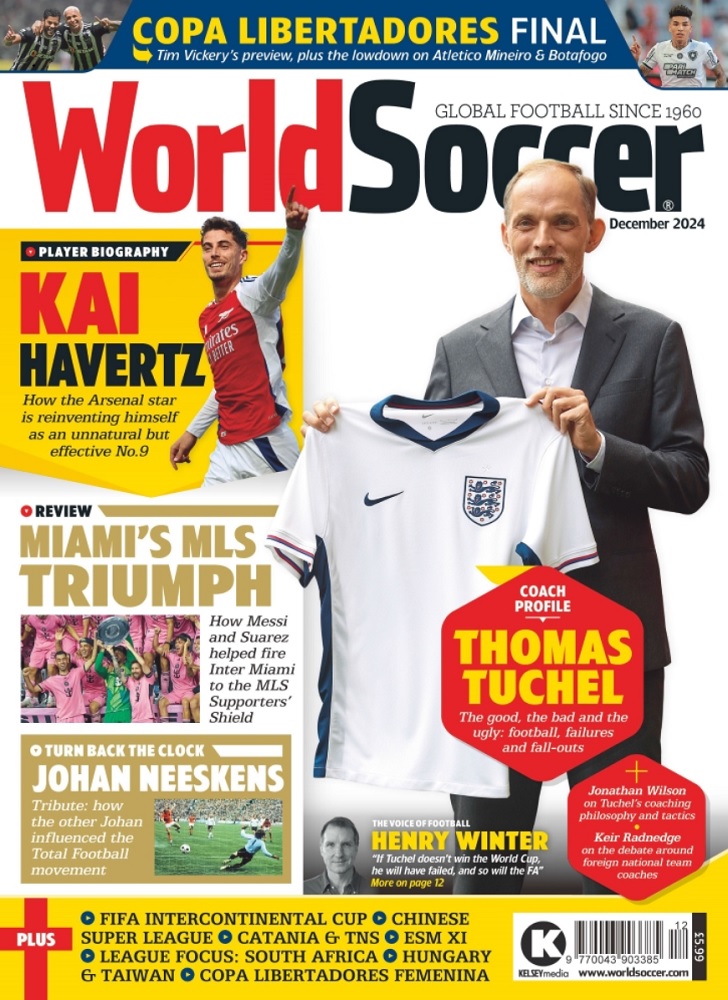In 1994, the USA staged the best-attended World Cupin history, attracting an average attendance of 68,991 per game. And in 2014 – as a further example of just how lucrative the American soccer market can be – 109,000 people in Michigan saw Manchester United take on Real Madrid in a pre-season friendly.
It is that ability to pull in a crowd and generate revenue that sees the 100th anniversary of the Copa America staged outside South America for the first time.
“An anniversary is also a celebration,” says Sunil Gulati, president of the US Soccer Federation (USSF), who are organising the tournament.
“And in thinking about how to celebrate the oldest confederation championship in the world, the leadership of CONMEBOL wanted to do something special.
“As CONCACAF teams have become part of the tradition of the competition, we were honoured to be asked to put on this event. The United States is uniquely suited to host; both as a destination for travelling fans as well as the millions of people living here whose heritage comes from the participating nations. We have the facilities, the infrastructure and the support to ensure a fantastic experience.”
This summer’s Copa is expected to draw far bigger crowds than any of the previous 44 tournaments as America’s soccer fan base, boosted by the country’s large immigrant communities, has such a big appetite for the international game.
While 2015’s Copa America in Chile attracted 655,902 fans, at an average of 25,227 for the 26 games, the Copa America Centenario is expected to attract between in excess of 1.5million fans for 32 games. And that is in spite of ticket prices for Argentina v Chile in San Francisco, for example, ranging from $91 to $794. Three weeks before the tournament’s kick-off, the Los Angeles Times reported that the Copa Centenario was top-selling summer U.S. sports event on the secondary-ticket market.
“This event is going to be so big thatwe believe that it will equal or exceed domestic television ratings for the 2014 World Cup in Brazil, and we all know how much that event grabbed hold of the country,” says Kathy Carter of Soccer United Marketing, the marketing agency for the USSF.
The tournament looked in jeopardy at one point, due to the involvement of Concacaf and Conmebol officials in the ongoing investigation into FIFA’s activities. However, the US Soccer Federation announced in October last year that it would press ahead regardless.
“Given the time constraints that resulted from our insistence on ensuring that the tournament be conducted in a way that was fully transparent, we are thrilled with the partnerships we have developed in such a short window,” says Gulati.
And staging this year’s Copa, after failing to beat Qatar in the controversial vote for the 2022 World Cup, is a great opportunity to push the USA’s claims for hosting the 2026 World Cup.
“We have spoken with pride and confidence about our ability to host world-class events, and this is another chance to demonstrate that,” adds Gulati.
“We’ve showcased for more than 20 years our amazing facilities, incredible fan support and ability to deliver a financially successful tournament.”
Copa Centenario Venues & Capacaties

The 82,566-capacity MetLife Stadium in East Rutherford, New Jersey, will host the Final
Gillette Stadium (Foxborough, MA) 68,756
MetLife Stadium (East Rutherford, NJ) 82,566
Lincoln Financial Field (Philadelphia) 69,596
Orlando Citrus Bowl (Orlando) 70,000
Soldier Field (Chicago) 61,500
NRG Stadium (Houston) 71,500
Rose Bowl (Pasadena, CA) 92,542
University of Phoenix Stadium (Glendale, AZ) 63,400
Levi’s Stadium (Santa Clara, CA) 68,500
CenturyLink Field (Seattle) 67,000
By Mike Woitalla







